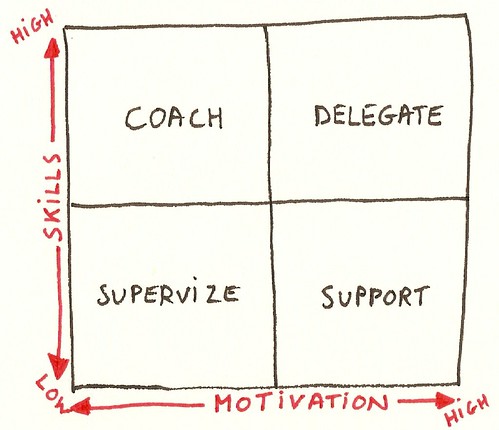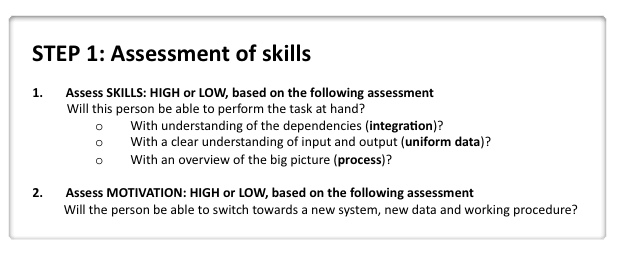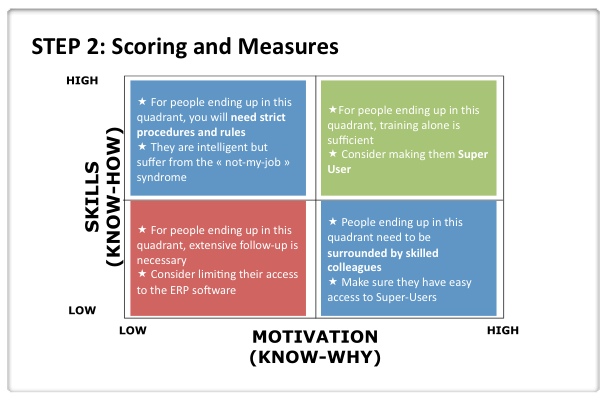One of the tools that I often use is the so-called Skill-Will matrix. I discovered it about 10 years ago in the book ‘The Tao of Coaching’ by Max Landsberg. I use this tool to predict and to plan how often my support is needed.
But it goes further than that. The skill-will matrix allows you to make a distinction between support and supervision.
Landsberg explains how a coach can divide her time with the team she has been assigned to. The easiest anchor point for coaches is found in the combination of motivation and skills. In order to know the type of interventions that is needed, you need to examine the combination of these two ingredients.
4 coaching styles
- Supervising: The coach clearly defines the roles and tasks and supervises their execution. Decisions are made by the coach and communication is unidirectional;
- Coaching: The coach still determines the tasks and roles but also asks the coached person for suggestions. Decisions are made by the coach, but communications are dialogue-based;
- Support: The coached person accepts the decisions and executes against them. The coach facilitates decision-making but is no longer in the driver’s seat;
- Delegating: The coach is still involved in problem-solving, but the coached person is in the driver’s seat. The coached person decides when and how the coach is involved.

Careful!
After a day or two of walking around and helping out people, you should be able to map the people on the Skill-Will Matrix. However, in practice we often find that coaches use this matrix to confirm their prejudices – so be careful with the self fulfilling prophecy that is hidden in these coaching styles. Supervision for instance, will not inspire people to take responsibility and to work independently.
The skill-will balance of a person is not fixed; it evolves as time goes by. Nevertheless, it is a good guideline for estimating your timekeeping as a coach, especially when you are coaching an entire team.
You can map every individual of your team on this matrix and balance your time-keeping as a coach accordingly.
An Example
If this all seems a bit too theoretical for you, let’s have a look at a real life example.
The application below is a skills assessment that we did for the users of a major ERP implementation for a multinational in the fast moving consumer goods industry.
It consisted of a two step approach, based on the framework of the skill-will matrix: assessment and measurement.
Next, we needed to make sure to have clear answer – or a rather ‘strategy’ – to respond to each of the four cases.
One warning though: don’t think that the exercise is done once you have made this assessment.
From now on you know where to start and how you will need to invest your time and attention best. The actions you will take where support is needed are far different compared to the instances when supervision is needed.




Pingback: Ký sự off Lập kế hoạch nhân sự « Ánh Nguyệt's Blog()